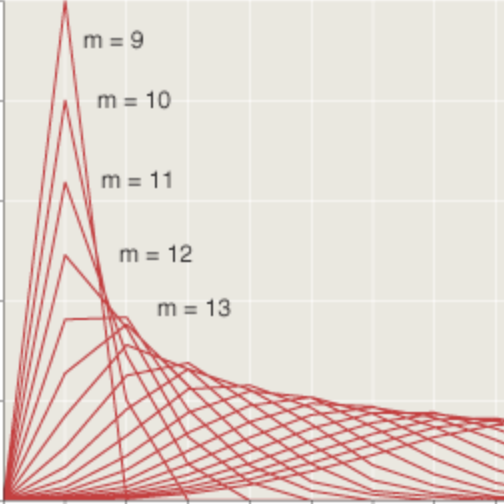More Gauss Anecdotage
by Brian Hayes
Published 13 June 2007
The story about young Gauss and his trick for summing an arithmetic series just won’t stop. My archive now includes 134 versions. Almost all the recent additions were discovered by Barry Cipra. (For a recap on what this is all about, see earlier bit-player postings here and here, or the American Scientist article here.)
I’ve also received an interesting e-mail from James Grant, developer of a Web site on Fibonacci:
… Fibonacci (better called Leonardo da Pisa) published the formula for adding a linear series in his pivotal book Liber Abaci in 1202, which persuaded Europe to use “Arabic numerals” (actually from India) instead of Roman numerals. He presents the method at the beginning of the 12th chapter. He also presents methods for calculating other series, including a series of squares.
Fibonacci does not claim to be the discoverer of these formulas. He credits Arab and Indian mathematicians.
I do not claim here that Gauss read Liber Abaci in time to impress his teacher. It seems quite fair to credit him with re-discovering this formula. I just think it’s important for us to be aware that the formula was known perhaps 1,000 years before Gauss sprang it on his teacher.
Here is part of the passage from Liber Abaci, transcribed from the translation of Lawrence E. Sigler (Springer-Verlag, 2002):
When you wish to sum a given series of numbers which increases by some given number, as increasing by ones, or twos, or threes, or any other numbers, then you multiply half the number of numbers in the series times the sum of the first and last numbers in the series, or you multiply half the sum of the first and last numbers in the series by the number of numbers in the series, and you will have the proposition. For example, I wish to sum 7 numbers that increase by threes from seven up to 31, namely 7, 10, 13, and so forth up to 31. The number of the aforesaid numbers is indeed 9, that is there are nine numbers in the aforesaid series, of which the first is the seven…. Therefore the sum of the extremes, namely the 7 and the 31 is 38; therefore if you multiply half the … 9 by the 38, or half the 38 by the 9, then the result is 171 for the sum of the posed series of nine numbers….
As Grant notes, Fibonacci is not the inventor of this method; it appears three centuries earlier in a manuscript attributed to Alcuin of York; furthermore, Don Knuth has pointed out that it can also be found in Archimedes. Among the early sources, however, Fibonacci makes the best effort at explaining the algorithm; other accounts merely state the problem and solution.
Publication history
First publication: 13 June 2007
Converted to Eleventy framework: 22 April 2025


